Best telescopes 2024: For stargazing galaxies, nebulas and more
We've rounded up the best telescopes on the market that will offer you stunning views of the night sky, with options to suit all needs and budgets.
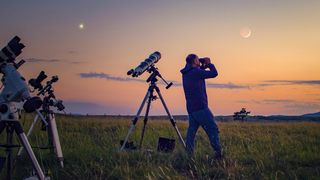
1. The list in brief ↴
2. Best for beginners
3. Best budget telescope
4. Best value for enthusiasts
5. Best premium
6. Best for planets
7. Best for portability
8. Best for astrophotographers
9. Best smart telescope
10. Best for deep space
11. Best for kids
12. Telescope FAQs
13. How we test
Investing in one of the best telescopes is the perfect way to start you off on your astronomy journey, helping you to catch glimpses of the many wonders of the universe, including stars, planets, moons, nebulas and galaxies. There are various different kinds of optical systems available, as well as different levels of aperture and focal length to consider depending on what you wish to view. Check out our Telescope FAQs below to help you decide what system and specs might work best for you.
With a wide range of models on offer, it can be difficult to know where to start, so our expert reviewers have put together a list of some of the very best telescopes available for different purposes. Whether you're a beginner just starting out, a pro looking for top-quality optics or a tech-savvy person looking for the latest smart technology, there's something on our list for everyone.
If you already have something more specific in mind, then we also have guides to the best beginner telescopes, the best telescopes for deep space and the best telescopes for seeing planets. And if you're keen to involve your kids in your astronomy hobby, we have guides to the best telescopes for kids and best binoculars for kids to help spark their interest early.
Solar eclipse glasses deals April 2024
With the total solar eclipse fast approaching on April 8, we know many Space.com readers will be keen to get the full experience. It's essential to use specialist eye protection when looking directly at the sun, so we've included a list of certified options below to help you view the eclipse safely.
- Amazon: Celestron solar eclipse glasses
- Walmart: Solar glasses, binoculars and filters available
- Best Buy: Solar glasses, viewers, telescopes and binoculars
- B&H Photo Video: Single and multipack eclipse glasses
- Adorama: Solar eclipse glasses and filter adapter kits
- Target: Discounted ISO-certified solar glasses
- Staples: Solar eclipse multipack available

A contributing expert to Space.com, Live Science, All About Space and more, Gemma is the author of several books including 'Quantum Physics in Minutes'. She holds a degree in physical sciences, a Master's in astrophysics and a PhD in computational astrophysics and became fellow of the Royal Astronomical Society in 2011. Gemma is also the Communications and Outreach Office at the European Space Agency.
The quick list
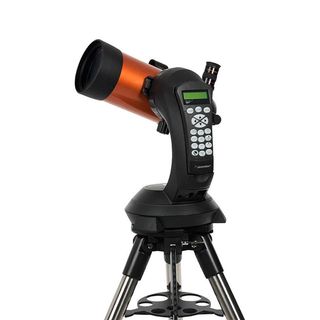
Best for beginners
A great scope for beginners, the Celestron NexStar 4SE is easy to use and set up, produces clear and bright images and has a whole host of useful features.
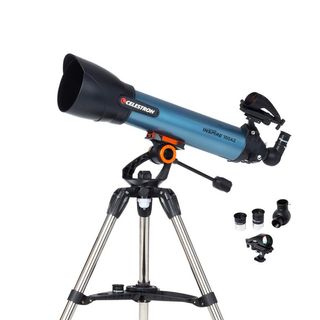
Best budget telescope
A great beginner scope for anyone just getting started with astronomy, it comes with a variety of accessories.
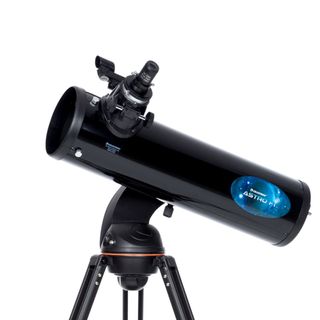
Best value for enthusiasts
We were really impressed with this telescope when we reviewed it and overall, thought that it's good value for money.

Best premium
We think this is an exceptional telescope that is high quality, easy to set up and offers breathtaking views. It's suited well for experienced astronomers too.
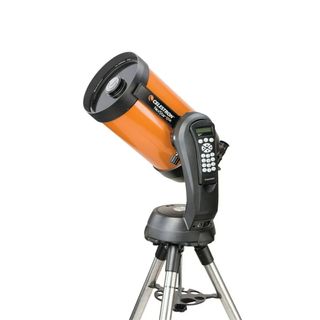
Best for planets
A fantastic scope for any experience level, it's incredibly easy to use yet powerful enough for deep space exploration and even astrophotography.
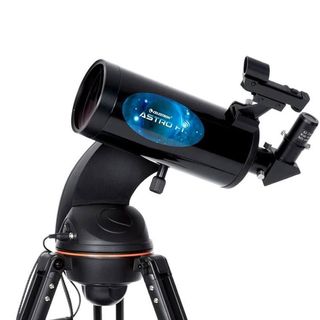
Best for portability
If you live in an urban area with lots of light pollution and need a telescope you can comfortably carry to dark sky sites, this could be the one for you.
Load the next 4 products ↴
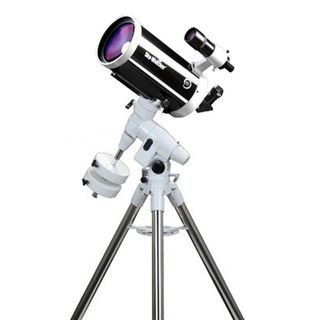
Best for astrophotography
Our favorite pick for astrophotographers, this telescope is a great all-rounder, suitable for capturing everything from nebulas to galaxies. We thought it has outstanding optical quality with no sign of any distortion.
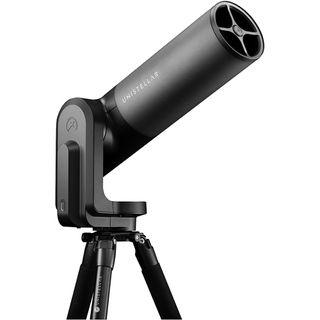
Best smart telescope
If you've got the budget for it, this is Unistellar's most advanced telescope to date. It has a very reliable app, and even features a Smart Light Reduction feature to eliminate light pollution in urban environments.

Best for deep space
Great for experienced, long-time astronomers, this scope is excellent for astrophotography thanks to the Edge HD technology. It is a little on the heavy side, but it can carry a load of up to 30 lbs.

Best for kids
This is a top tabletop telescope and if you're a beginner or looking to inspire a young astronomer, this is an ideal starting point. It's easy to set up and put away, but it's not the most powerful.
Best telescopes 2024 that we recommend
Why you can trust Space.com
Best for beginners







Specifications
Reasons to buy
Reasons to avoid
✅ It's your first telescope: This scope is easy to use and set up, making it perfect for beginner astronomers.
✅ You want GoTo technology: You can easily find and track specific celestial objects with little or no prior knowledge.
❌ You want to travel with it: This telescope isn't the most portable as the tripod doesn't quite fold down entirely.
🔎 Celestron NexStar 4SE If you want to view the planets and bright objects in the sky quickly and effortlessly, the Celestron NexStar 4SE will certainly do the job. ★★★★
The Celestron NexStar 4SE makes a fantastic choice for beginners owing to its fully computerized mount. Celestron's SkyAlign technology uses your date, time and location to auto-find various targets within the night sky at the push of a button, making it easy to get to grips with for newcomers to stargazing.
It features a 4-inch (102mm) aperture and a focal length of 1325mm, which is enough to give sharp views of the planets and other bright sky objects. The downside is that this combination results in a fairly narrow field of view of only 1.2 degrees, which means it struggles to fit bigger deep sky objects into the view. You get a 25mm Plossl eyepiece included in the box, but we think you'll get better results if you purchase an additional 32mm eyepiece and Barlow lens to make the most of the 241x highest useful magnification.
In terms of design, this scope has a very solid build and comes with a sturdy tripod and a handheld remote with tactile buttons, so there's no need to control it via an app. Weighing 23 lbs (10.4 kg) in total, it's not the most portable telescope, and the power-hungry mount eats through the required 8xAA batteries quickly, so we recommend hooking it up to an external power source. But for those who want to stargaze from their backyard, this would be a very easy and enjoyable scope to get started with.
- Read our full Celestron NexStar 4SE review
| Attributes | Notes |
|---|---|
| Design | Solid and sturdy build, signature orange colors. |
| Performance | Great for observing the moon and planets. |
| Functionality | Alignment correction can be tricky. |
Best budget telescope







Specifications
Reasons to buy
Reasons to avoid
✅ You're a beginner: We found it easy to set up and take down, and with it being relatively lightweight, you can easily transport it around with you.
✅ You want to take astrophotos on your smartphone: The lens cap cleverly turns into a smartphone holder so you can capture images of the night sky.
❌ You aren't confident locating objects yourself: This telescope doesn't have GoTo technology, so you'll need to be fairly confident in being able to locate specific celestial objects yourself (or utilize the help of a stargazing app).
❌ You want detailed views of deep sky objects: While this telescope can give great views of planets and the moon, objects further away may be a little underwhelming.
🔎 Celestron Inspire 100az Aimed at beginners and those looking to upgrade, this 4-inch refractor is at its best with the moon and planets and comes with a lens cap that converts to a clever smartphone holder for easy astrophotography. ★★★★
For beginners and anyone on a budget, the Celestron Inspire 100AZ is a great choice. It comes with various accessories, and it's sturdily built and equipped with a ton of user-friendly features, making it a breeze to use and good value for money.
The telescope is sturdy and easy to use. Featuring a 100mm aperture, it gathers a significant amount of light, allowing clear observations of faint celestial objects like nebulas and galaxies. Moreover, its long focal length provides substantial magnification for detailed views of planets and other nearby objects.
The Inspire 100AZ telescope comes with various accessories, including two eyepieces, a red LED flashlight to maintain night vision, an accessory tray, a StarPointer Pro finderscope for locating celestial objects and a smartphone adapter for simple astrophotography.
During our Celestron Inspire 100AZ review, we found a small amount of false color (purple color fringing), and a slight blurring in the field of view was noticeable. The latter is easily resolved with a careful selection of eyepieces, so we recommend investing in one of the best eyepieces to make the most of the Inspire 100AZ's optical system. The slight amount of false color shouldn't dampen your experience unless you are particularly fussy about color accuracy being spot on.
If you're looking for an affordable telescope to get started with astronomy, the Inspire 100AZ is a great option.
- Read our full Celestron Inspire 100AZ review
| Attributes | Notes |
|---|---|
| Design | Fairly lightweight. |
| Performance | Excels with lunar views. |
| Functionality | Easy to set up and take down. |
Best value for enthusiasts
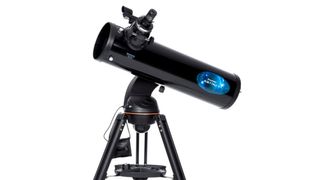
Specifications
Reasons to buy
Reasons to avoid
✅ You want a beginner-friendly, grab & go and easy-to-use telescope: We thought this was a great entry-level telescope that can find targets at the touch of a button and is great for on-the-go observations.
❌ You want a 'traditional' telescope: We found that this telescope is completely useless without the app, so if you want a more traditional telescope without much of the newer technology, look elsewhere.
🔎 Celestron Astro Fi 130 A good telescope at an exceptionally good price, it has everything you'd need if you're just starting out, although we would recommend upgrading some of the included pieces. It can lose charge faster in cold conditions, though, so consider buying an additional power source. ★★★½
With the Astro Fi 130, Celestron have provided a very capable entry-level telescope at an affordable price. This well-constructed tube consists of a Newtonian reflector and comes with a sturdy aluminum tripod, 10mm and 25mm Kellner eyepieces offering 65x and 26x magnification and a red dot finder. We'd strongly recommend purchasing some mid-range Plossl eyepieces to get the very best out of this scope.
Newcomers to astronomy will find this telescope very easy to set up and use thanks to the SkyAlign technology, which requires no prior knowledge of the night sky to get your telescope ready for viewing. You then control the scope via the Celestron SkyPortal app on your smartphone or tablet. If you're not sure where to start, the app can even recommend objects for you and guide the computerized mount to them.
The optics on the Astro Fi 130 allow for good views of the Moon, offering enough magnification to see the craters and rilles littering the lunar surface. Venus and Mars are also easy to pick out, and you can even catch a glimpse of the Andromeda Galaxy.
The batteries can drain quickly in cold weather, so it's probably worth buying 12V rechargeable batteries for it, but overall, this is a well-priced telescope that has everything beginners will need to get started on their stargazing journey.
- Read our full Celestron Astro Fi 130 review
| Attributes | Notes |
|---|---|
| Design | Very sturdy build with well constructed tube and tripod. |
| Performance | Makes use of SkyAlign technology for easy alignment. |
| Functionality | Great for lunar and planetary observing, but some views are fuzzy. |
Best premium
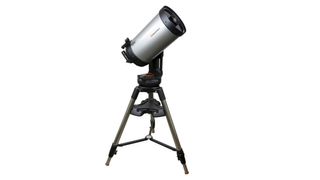
Celestron NexStar Evolution 9.25
Our expert review: